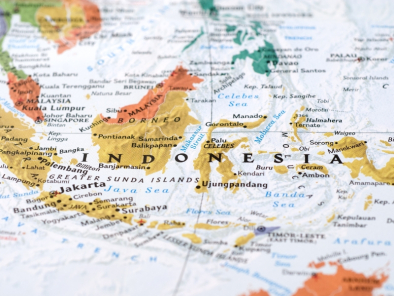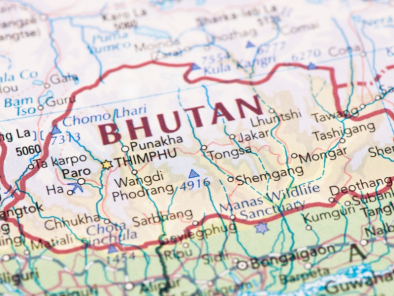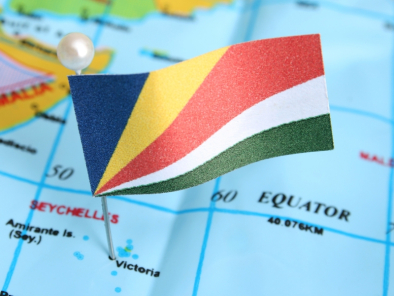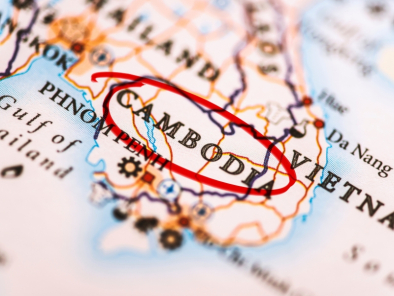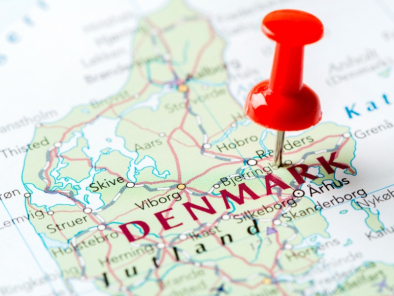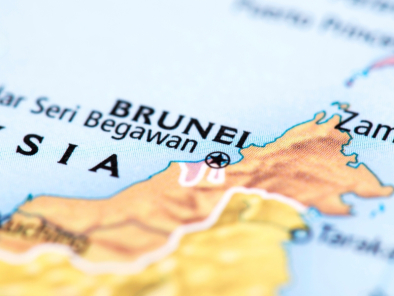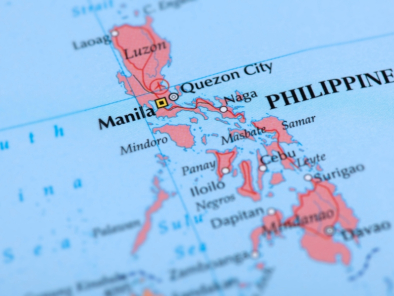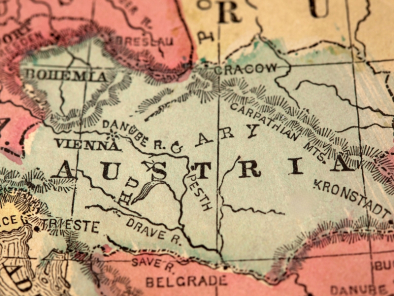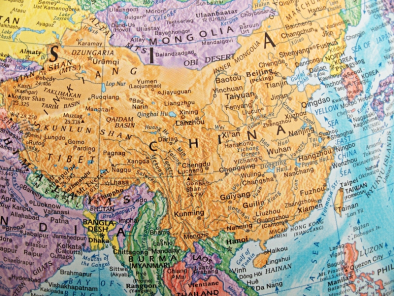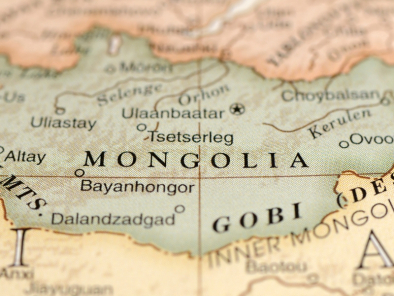
Posted by: Leo Travel Hub
TRAVEL TIPS FOR MOROCCO
Morocco- the very name conjures up the romance of Casablanca, the high Atlas Mountains and beyond to the empty skies of the Great Sahara Desert. Whether you decide to enjoy its hot summer sunshine or it’s balmy winter days, Morocco will captivate you with a wealth of things to see and do. In Marrakesh, beautiful gardens and the famous souks, with the ceaseless activity of Djemaa El Fna Square; In Agadir, you will find miles of fine sandy beaches. Discover a kingdom unmatched for historical splendour, legendary hospitality and a variety of beautiful landscape seldom seen in one country.
Visa: The visa is to be obtained prior to arrival in the country.
Flights
Emirates flies into Casablanca.
Airports
Most flights,
domestic and international, converge on Casablanca's
Mohammed V Airport. The impressive modern terminal contains a tourist
office, car hire desks, currency exchange counters, shops, a post office, bars
and restaurants, and a prayer hall. There are free luggage trolleys. The second
busiest airport, Agadir, has
non-stop flights to and from several European capitals. Marrakech, Tangier and Ouarzazate are among other cities handling
some international traffic. Royal Air
Maroc domestic flights link towns all the way down to Laayoune and
Ad'Dakhla in the extreme south.
Transport
Trains: ONCF,
L'Office National des Chemins de Fer, runs a comprehensive train service among
most of the main Moroccan cities. The busiest line, between Casablanca and
Rabat, has frequent, speedy trains, with the comfort level in 2nd class up to
European standards. Air-conditioned luxury coaches roll along the highways
between all the principal cities; regional buses are less fast and comfortable.
Flights: Royal
Air Maroc provides flights between all the major cities of Morocco. Bookings
can be made at RAM offices in all cities and whilst prices are considerably
more expensive than train and bus fares, flights are both quicker and more
comfortable.
There
is a variety of transport available, travelling to virtually anywhere in the
country. Planes, buses, trains, grand taxis and trucks ply popular tourist
routes regularly
Buses: Morocco's
bus companies ply well-worn routes across the country and provide affordable
access to areas off the major railway routes
Taxis: Grand taxis ply similar routes to bus and train services, but generally over shorter distances, and they even have their own terminals
Climate
Most of the year
temperatures are temperate in most Morocco. Near the coast the influence of the
sea moderates summer heat waves, and in winter the average temperatures rarely
drop below
The climate varies from region to region in Morocco.
While the coast enjoys a
Mediterranean climate of warm summers (although the Eastern Coast is somewhat
cooler) the inland regions are characterised by being hotter and drier
throughout the summer - more akin to a continental interior climate.
Further south the climate increases in temperature and becomes even drier as
the desert regions start.
Highland areas enjoy a cooler climate although even in winter in Marrakech you
can expect an average temperature above 21°C. The wettest season occurs Nov-Mar
although most rainfall is confined to the coast.
Visiting in the height of summer can be stiflingly hot, especially in the cities of the nation where there it little
respite from the heat. The most comfortable time to visit would be in the
Spring - Mar-Apr, although this may coincide with part of the wet season, and
autumn around Sep and Oct.
Holidays and festivals
Because two calendars are used in Morocco ---the
standard Gregorian model of 365 days as well as the Muslim year, which is 11
days shorter---things tend to be complicated. New Year's Day, a national
holiday, always falls on January 1, but
religious holidays follow a different rhythm. Consequently there's no such ting
as a religious holiday that always occurs at a certain season. (The holy month
of Ramadan starts in the end of September in 2006). Here is the line-up of
non-religious public holidays:
January 1 : New
Year
May 1 : Labour Day
May 23 : National
Day
August 14 : Allegiance
Day
July 30 : Coronation of King Mohamed 6
November 6 : Anniversary
of the Green March
November 18 : Independance Day
Currency and Credit Cards
The unit of currency is the Moroccan dirham (DH),
divided into 100 centimes. In practice, tourists rarely see anything smaller
than a half-dirham coin. Coins go up to 5 DH. Banknotes are issued in
denominations of 20, 50, 100 and 200 DH.
Well-known credit cards such as visa, mastercard and
American Express are accepted in hotels, restaurants and most shops. It's best
to change traveller's cheques at the bank. Eurocheque are also useful at banks
and in some shops and hotels. Always have your passport with you as
identification when changing money.
Moroccan Dirham cannot be obtained outside of Morocco. You are advised to carry enough foreign currency for your needs - with American Dollars being most favoured. You can exchange most foreign currencies across the counter in major banks and branches of international bureaux de change in Morocco. Large amounts of some currencies may not be exchangeable at smaller bureaux, especially in rural areas.
Time
All year round all of Morocco is on Greenwich Mean
time (GMT)---this means that in summer it is usually two hours behind South
Africa and the rest of Europe.
Dialing code
+ 212
Tipping
People often let you know, subtly or otherwise, when a
tip is appropriate. Don't forget waiters in cafés and restaurants, porters in
hotels and terminals, toilet attendants, taxi drivers, helpful
museum curators, and (not at all optional)
those human parking meters
(gardiens de voitures).
CITIES:
MARRAKESH
This fabled city, once the capital of Morocco,
pulsates with energy. Every road leads to the famous Jema El Fna Square, where there’s always a kaleidoscope both of
colour and activity.
There, musicians, dancers and fire-eaters rub
shoulders with public scribes, storytellers and acrobats, and vendors of fresh
orange juice vie with grilled nut salesmen for business from passers-by. In the
evening, the lamps are lit and the hot food stalls are set up. Before long, the
balm of nightfall is accompanied by the delicious smells of roasting meat,
couscous, harira and freshly baked doughnuts.
Suddenly, as you turn the corner of a narrow street,
through a half open door, you catch a glimpse of a palace with a fountain
cascading in the forecourt. The Bahia
Palace, with it’s gardens filled with the fragrance of jasmin and orange
flower, or the Dar Si-Said, which now houses the Museum of Moroccan Arts.
Everything in Marrakech is worth seeing : the
impersonal beauty of the Saadian Tombs,
the Ben Youssef Medersa and the
majestic ruins of the Badii Palace.
Then there are the souks. To wander through a souk is to be drawn into Aladdin’s cave of fine rugs, silverware, jewellery, basketry, pottery, wood carving and exceptional leatherware, for which Morocco is renowned. There are quite a lot of amazing things to do in Marrakech; drift towards the Atlas Mountains in a hot air balloon, go camel riding in the palmgroves or spend a day skiing if you are visiting Morocco in the winter.
Djemaa el Fna
There are few places on earth as exotic, or as
strange, as Djemaa el Fna (Place of the Dead), the busiest square on the entire
African continent, and much of the reason why travellers have been lured to
Morocco for centuries. At any time of day there is something beguiling
occurring on this public square, where wealthy sultans once beheaded enemies
and criminals. Snake charmers, musicians, palm readers, gypsies,
bedouins, dentists, men selling dried animal parts for potions, and an endless
array of colours mix in a swirling rhythm of energy.
Koutobia Mosque
Named after a bazaar of booksellers that once stood nearby, the Koutobia Mosque is one of
the most stunning pieces of architecture you will find in Morocco. The mosque
was constructed in the early 12th century by Almohad Sultan Abdel Moumen, and
is topped by three golden orbs, offered, according to legend, by the sultan's
mother as penance for missed fasting days during Ramadan. The red brick minaret
stands approximately 70m high, and can clearly be seen from all points of the
city. If you think the mosque looks vaguely familiar, it may be because it was
used as a model for the Hassan Tower in Rabat and the Giralda in Seville.
South of Avenue Mohammed V. Closed to non-Muslims, however, the gardens outside
are open to all.
Jardin Majorelle
Majorelle botanical garden, owned by French fashion
designer Yves Saint-Laurent since 1980, is quite stunning and offers a
wonderful break from the otherwise dry, dusty cityscape - it is an oasis in the
city if ever there was one. The blue hues, lush green plants from five
continents, and small lily strewn ponds show a side of Morocco that you
shouldn't miss. Designed by the expatriate French artist Jacques Majorelle in
1924, the shade of bold cobalt blue which he used extensively in the
garden, and on the studio walls is named after him, Majorelle bleu.
The garden also houses the Islamic Art Museum of Marrakech, whose collection
includes North African textiles from Saint-Laurent's personal collection as
well as ceramics, jewellery, and paintings by Majorelle. Ave Yacoub el Mansour.
Open: daily 08h00-17h00 (Oct-May); 08h00-18h00 (Jun-Sep).
Bahia Palace
The Bahia (meaning "brilliance") Palace was
built in the late 19th century by Si Moussa, Grand Vizier of the Sultan, also
known as Abu Ahmed, a black slave who rose to power and enormous wealth. With
plans to create the most magnificent palace of its time, Ahmed commissioned craftsmen
from Fez to design the ornate building for him and his favourites concubines.
Blending Moroccan and Islamic styles, the buildings are highly decorative and
elaborate - arguably too much so for most modern tastes. A central, two-acre
garden is surrounded by rooms intended for his concubines and is one of the
highlights of a tour.
Rue Riad Zitoun el Jadid. Open: daily 08h30-11h45 & 14h30-17h30
Palais Dar Si Said
Built by Sidi Saïd, brother of Vizier Bou Ahmed, this
19th century palace is now the best museum in Marrakech. (Museum of Moroccan
Arts). The highly valued collection of Moroccan antique crafts includes
jewellery, carpets, leatherwork and pottery from the seaside town of Safi and
from Tamegroute, near Zagora. On the ground floor you can find clothes, objects
in beaten copper, arms and Berber jewellery. The first floor is detailed in Spanish
Moorish decoration and you can also find elegant cedar furniture.
Riad Zitoun el Jedid. Open: Wed-Mon 09h00-11h45 & 14h30-18h00.
Menara Gardens
Containing centuries-old olive groves and palm trees,
the country retreat of Menara Gardens is an ideal place to flee the
chaos of the city. To this day the original underground canals innovatively
irrigate the 30,000 plus olive trees. Replacing older buildings from the 16th
century, the current pavilion was rebuilt for Moulay Sulieman in the early 19th
century and has a stylised European appearance, with arched openings and faux
red bricks trimming them.
Ave de la Menara. Open: daily 08h00-19h00.
Saadian Tombs
Situated in the north-west of the Kasbah, the
beautiful Saadian Tombs date back to the mid 1500's and feature stunning
coloured tile work, intricate carvings and grand marble pillars. Sultan
Ahmed Al-Mansour, who ordered the construction of the mausoleum complex, was
also the first to be buried there, and his tomb, not surprisingly, is one of
the most ornate. The tombs were sealed in the early 1700's and nearly forgotten
until 1917 when they were reopened.
Rue de la Kasbah. Open: Wed-Mon 08h30-11h45 & 14h30-17h45.
Medersa Ben Youssef
This medersa (Koranic school) was built in 1565 for
Sultan Moulay Abdullah el-Ghalib of the Saadians and was the largest in
Marrakech with several hundred teachers and students. In its heyday it was the
preeminent medersa in Marrakech, but it was closed in 1960 and is now open
solely for visitors. The complex is centred on a lovely courtyard, with a
fountain and reflecting basin. The walls and doorways are ornately decorated in
a variety of materials: look out in particular for the fine prayer hall
containing the mihrab (prayer niche).
Place Ben Youssef, just north of the souks. Open: daily 09h00-17h00. Mosque is
closed to non-Muslims.
The Medina
The ancient quarter of Marrakech inside the
city walls is where most of the population resides and the major reason for its
nickname "the red city". The 16km-long city walls and over 200 towers
that circle the Medina all have a reddish hue that has become one of the city's
defining characteristics.
The sprawling maze containing many souks follows the most traditional way of life, and its thick high walls conceal many treasures. Plain fronted doorways open out into pretty courtyards, revealing beautiful riads, restaurants and shops. Without question, the Medina is the most interesting part of the city. If you get lost, you can always pay a child to lead you out
Ville Nouvelle
Also known as the modern city and Gueliz, this section of town to the west of the Medina is filled with wide boulevards, modern shops, business amenities, hotels and restaurants. Though not nearly as atmospheric as the old town, it has its own charms and is a good place to stay. Being modern, it has a more international feel to it than the rest of the city, and is thus popular with expats and wealthy Moroccan business people.
Rabat & Casablanca
Morocco is bordered by the Atlantic from near Tangier in the north, right down south to Laayoune. However, when it comes to touring, our favourite stretch of this western coast runs from Rabat, the capital, to wonderful Casablanca. We’ve named this the ‘Golden Coast’ after the richly coloured Atlantic beaches. Using the good roads or Morocco’s motorways, there’s much to explore on the golden coast
RABAT
The Imperial city of Rabat is the capital of Morocco, which accounts for the large number of diplomatic residences in its
leafy. Verdant gardens, tree covered slopes, parks and a huge golf complex
soften this pleasant city, set on the south bank of the Bou Regreg river
estuary. As you might guess, the hotels and restaurant here understand the
difference between a shaken or stirred martini!
Perhaps the best-known landmark is the massive 11th century Hassan Tower, overlooking the river and fronting the remains of the roofless El Hassan Mosque, and the neighbouring Mohammed V Mausoleum. This is the resting place of the present Kingdom. On entering, you peer down from a hushed balcony to an onyx sarcophagus floating on a pool of black marble.
Rabat also has one of the world’s top 50 golf courses;
the Dar es Salam club boasts 3
courses, each colour coded according to difficulty. Cork trees line the
fairways, egrets stalk the drives, and lily filled ponds are often home to
flocks of pink flamingos.
Rabat is the current capital and home to the Moroccan government and His Excellency
Mohammed VI. It is a sophisticated seaside city with an impressive cultural
life and yearly international arts festival. The souks both here and across the
river at Sale are excellent, and can, like the city itself, turn up unexpected
treasures.
The mausoleum of Mohammed V is an important site of pilgrimage to pay respects
to the monarch who led Morocco to independence in 1956. The unfinished minaret
that stands nearby is the city's symbol however. Called the Tour Hassan
it was planned to be part of Yacoub al Mansour's iconic great mosque.
Unfortunately during construction in 1755 the site was shaken by an earthquake
and building was never resumed. Rabat can also boast several notable museums
and institutions that make a visit here a rewarding experience. The pick of the
bunch is undoubtedly the archaeological museum on the site of the ancient city
of Sala just outside the city.
CASABLANCA
This place of deep shadows and great passion isn’t
quite the same as the real Casablanca, which is actually the greatest
commercial centre in Morocco. There are tower blocks, cashpoints, wide
boulevards, squares, fountains and shoals of suicidal mopeds. This is a busy
modern city, more intent on big business than selling carpets to visitors.
But this city does have a French soul. With so many
pavement cafés, there’s a distinctly gallic flavour, yet you can’t forget this
is Morocco. Bargains to be had in Casablanca include leather bags and
briefcases.
Casablanca is a coastal city, and towards the sea there’s
a strip of excellent hotels and some of Casa’s best restaurants. This is also
where Casablanca’s greatest landmark stands; set on a man-made promontory, the
king has recently built the largest Mosque outside of Mecca and described as
the eighth wonder of the world. It’s tower stands
Casablanca is unlike any other city in Morocco in its
modernity and aspirations. It is here that many upwardly mobile Moroccans seek
to assert the style and sophistication of the modern Maghreb. This is a truly sophisticated
North African city with a European air underpinned by the French orientation of
the city into one of Parisian boulevards and squares. The city's medina might
not be as impressive as those of Fes and Marrakech for example, but is still
worthy of exploration.
The magisterial Hassan II Mosque and Mausoleum is an indication of its
relative wealth and affluence compared to other parts of the country. The
second largest mosque in the world it is an awe-inspiring spectacle, even if
not as architecturally pleasing as some smaller Islamic
places of worship. The massive single minaret that stands by the main building can be seen from all over the city and the daily call to prayers rings out over the neighbourhood.
If visitors are somewhat disappointed by not
discovering the laconic colonial town that Bogart shuffled his way round in the
movie then that's hardly surprising as none of the film was actually shot on
location. In any case visitors are more than compensated with by the experience
of a thoroughly modern North African city, brash and self-confident.
Mosque Hassan II
In July 1993, present King Mohammed VI's father, King Hassan II, inaugurated
his namesake mosque, second only in size to the one in the Holy City of Mecca.
A source of great national pride, the towering edifice is built over the water,
and is large enough to accommodate over 100,000 worshippers. Most of the
country contributed to its construction, and many people exhibit certificates
to that effect in their homes or in their place of business. The enormous
minaret reoceanmains a work in progress.
Parc de la Ligue Arabe
The beautifully landscaped gardens that stretch through the heart of downtown
shelter a decommissioned cathedral, a busy playground, a gymnastics compound,
and cafés nestled among giant fig trees. It is the largest park in the city,
laid out in the European fashion. The Sacré Coeur Cathedral here is a focus of
attention but has fallen into disuse since being built by the French in the
years between the two world wars. However, in its Art Deco lines you can see
the Parisian cathedral it is named after.
The Old Medina
The Old Medina, hidden behind thick stone walls, houses a maze of alleyways, as
well as the Portuguese bastion called La Skala and 18th-century cannons. Most
stalls crowd around the restored 1920s clock tower. Buyers beware, for the
medina is a haven for pickpockets, but it is also great to wander round
browsing the sights, sounds and smells. It's not as large as the more famous
medinas of Fez and Marrakech so don't be too worried about getting lost. There
are plenty of cafés around here as well.
The New Medina
and Hibbous District
Planned by French architects in the 1930s, the New Medina is where local
residents go to shop. One of the most colourful marketplaces is the Olive Souk.
Nearby, the Mahakma Law Courts are a city landmark built in traditional
Hispano-Moorish style, and well worth investigation.
Villa des Arts
Museum
This landmark 1920s Art Deco villa, restored by the Omar Benjelloun Foundation,
puts on shows by artists and musicians and audio visual presentations
pertaining to Moroccan culture. Musée Villa des Arts. 30 Blvd Brahim Roudani.
Open: Tue-Sat 10h00-13h00 & 14h00-19h00. Tel: +212 (0)22-29-5087.
El Jadida
Located 60 miles south of Casablanca, El Jadida is famous for its Portuguese
"Cistern" an antique water tower (that featured in Orson Welles's
Hamlet if you're interested). The town itself is interesting if not terribly
pleasant. It was a Portuguese fortified town for a couple of centuries before
being besieged and falling in 1769. You can still walk the old city walls and
bastions, although there hasn't been much done to preserve them and in parts
they appear rather shabby and dirty.
AGADIR
If you are looking for a beautiful unspoilt stretch of coast, Agadir is the perfect base. It is the place for sailing, surfing, galloping through the edges of the tide on horseback, scuba diving, parachuting over the sea… or just getting one of the best tans North Africa can offer. Agadir is close to the Canary Islands, and is Morocco’s show piece resort. Wide boulevards and gardens run deep into Agadir, and the golden sand beach that fringes the huge bay is of such a size that people sit together out of choice rather than necessity. Weary Atlantic waves collapse on the gently shelving bottom, making this a great place for padding children and extensive waster sports.
FES
A citadel of magnificence, Fes is the most imperial of the Imperial Cities of Morocco. Some of
the nation’s greatest treasures are found in this great place of palaces and
museums, all entrancingly framed in sunlight and shadows. The first capital of
the kingdom in 808 under Idriss II, Fes –the spiritual and cultural centre of
Morocco- is the most perfectly preserved medieval Islamic city in the world.
This makes Fes the biggest culture shock you’re ever likely to have. One of the
greatest city’s greatest sights is the imposing and splendid El Quaraouiyin mosque with its
scintillating roof of emerald tiles.
Serenely set in
the gentle rolling hill country of the middle Atlas mountains, at its
heart is the ancient, completely walled city of Fes el Bali, and its World Heritage listed medina. The city of Fes
was once the spiritual centre of Islamic North Africa and retains that status
in modern Morocco. This sacred city also plays host to the internationally
renowned annual Fes Festival of Sacred Music in May/June.
At any time though the thousands of winding streets and narrow alleys create a
maze of enticing prospects. Search the souks for bargains, or explore the Medersa Bou Inania Islamic University's
impressive 14th-century bulk and distinctly Moroccan architecture. There are
plenty of other opportunities for admiring Morocco's artisan traditions,
both those that have grown up here over the centuries and those that are part
of modern life in the city. Take in the sunset from the hillside Tombs of the Merinid Sultans. As the muezzins call
from the minarets, the glistening greens and golds of the mosques' sickle moons
in the dusk capture the true timeless nature of a city where life continues
much the same as it has for centuries
Excursion from Fes:
VOLUBILIS
For those with a passion for archaeological
exploration, the ubiquitous Romans have left their mark here as
enduringly as they have across the Mediterranean in Europe. The roman ruins at
Volubilis are set in gently rolling farmlands and are easily accessible as a
day trip from either Meknes or Fes. Built on a Carthaginian city Volubilis
functioned as an administrative centre for this particular far-flung arm of the
Empire.
Volubilis was actually lived in for centuries after the Romans had long since
left and later settlements that made use of the existing Roman structures. The
city was eventually abandoned in the 17th century, but, having been virtually
unchanged since the days of Empire at this late date would have probably been the
greatest relic of Ancient Rome in existence. Unfortunately it was scavenged for
building materials at various points in the last few centuries. But, even if
the majority of it now forms foundation stones for nearby Meknes, the small
section of the Roman city that remains is an interesting if unspectacular
arrangement of arches, standing pillars and mosaics. The site makes a spectacular setting for concerts in the
summer.
Shopping
The knotted carpets of Rabat and Fes are the
most prized and expensive. Berber kellims are woven, significantly
cheaper, though often just as appealing, dazzling jewel encrusted belts,
bangles, rings and charms. There are an assortment of fine leather goods on
offer, with beautiful Berber saddlebags, handbags, leather bound books
and babouches.
There is a strong tradition of high quality craftwork in all the Imperial cities. Rabat is famous for its embroidery, carpets and Salé pottery. Meknes, for its wood carving, its metal and animals encrusted with silver thread and its mosaics. Fez is the capital of handicrafts, specializing in the famous <<Fez blue>> pottery, carpet trays and leatherwork. In Marrakesh, the leatherwork, pottery, rugs and copper plates are of particularly high quality.

